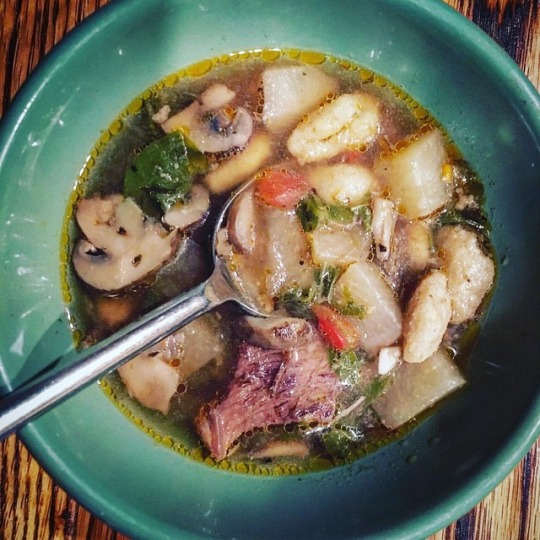Fried Chicken with a Side of Humor
The food writer Laurie Colwin once wrote, “As everyone knows, there is only one way to fry a chicken correctly. Unfortunately, most people think their method is best, but most people are wrong.”
I have eaten more fried chicken than a person should admit to and I ensure you I am not one of those people in a poultry bubble. Fried chicken may sound like a fun way to spend a Sunday afternoon. And it is, once you are done.
It requires an acute attention span to the most mundane of tasks. Mostly you will be plunging thighs and breasts (not yours) in and out of a bath of bubbling oil. Let your mind wander too far for too long and you will have burnt outsides without surrendering the possibility of raw insides. The temperature must be fastidiously manned.
It is also hard to pass the time with a cocktail in hand. At least part of your dexterity will be devoted to dredging and shaking chicken parts. A straw can help with this. But if the thought of drinking your Chablis through a tube does not move you, I suggest a tiki drink.
This recipe is adapted from one published in the The Times from 2015 and provides the framework for a crispy, salty crust and juicy meat. The original instructions were for cold fried chicken from chef Gabrielle Hamilton, of Prune in New York City. But it seemed a shame to go through all that work only to delay enjoyment.
I prefer it hot anyway. Though it is good as cold leftovers too, as promised. I also cut the salt way back. It was edible, but brackish on the first attempt.
It holds up to some of the best fried chicken I have had, which includes the versions found at State Park and Prairie Whale, as well as the kind my friends, David and Justin, brought to a picnic a few years ago. All mentioned parties have a good sense of humor, which I believe is also necessary for great fried chicken.
While fried things have a reputation for being unkind to the body, this chicken is fine to have so long as you do not make it a weekly occurrence. Besides, many of us may be in need of mediation by way of fried chicken given recent political events.
It is the kind, as Colwin says, that makes you “want to stand up and sing ‘The Star-Spangled Banner.’” Which is good because we will likely need all the help we can get this year.
Superlative Fried Chicken
Adapted from The New York Times and Gabrielle Hamilton, of Prune
Ingredients:
for the soak
- 2 cups buttermilk
- 1 tsp kosher salt
- ½ tsp cayenne pepper
- ½ tsp ground black pepper
- legs and wings of 2 whole chickens (or 3 pounds of chicken thighs), see notes
for the dredging and frying
- 1½ cups all-purpose flour
- 2 tbsp plus 1 tsp ground turmeric
- 1 scant tbsp kosher salt
- 1½ tbsp ground black pepper
- 4 to 6 cups of canola or peanut oil (enough to come 3 inches up a deep bottomed pot)
Instructions:
the day before
Cut up your whole chickens, if using. In a large bowl, mix all ingredients for the soak and add in the chicken pieces, tossing to coat. Refrigerate overnight.
the day of
In a large bowl, mix the flour, turmeric, salt, and pepper. Set a cooling rack over a sheet pan. (You may also want to prepare another rack set above a sheet pan for later.)
In a large dutch oven or high sided pot, add the oil. Heat on medium to medium high heat. If you have a deep fat thermometer (which I highly recommend), attach it to the inside edge of the pot.
Remove the chicken pieces from the buttermilk mixture, allowing the excess liquid to drip off. Drop each piece into the flour mixture and toss to coat.
Shake off the excess flour and set the dredged chicken on the prepared rack. Repeat until all chicken is well coated.
Once the oil reaches 325 degrees (specks of flour should sizzle when dropped in), carefully place three or four chicken pieces in the oil. Fry until just shy of golden. Let rest on a second (clean) cooking rack set over a sheet pan. (During this process, adjust the heat as needed to maintain the temperature.)
Once all the chicken has been fried, skim off any flour bits in the oil and raise the heat to reach 350 degrees.
Fry the pieces again until they are deep golden brown. (Again, adjusting the heat as needed to maintain the temperature.)
Drain on a rack until all pieces have been fried.
Makes enough for four to six humans
Notes:
- I have tried using chicken thighs versus cutting up two whole chickens into eight pieces (wings, drumettes, drumsticks, and thighs) and preferred the whole chicken method. If you prefer this as well, set the breasts aside for another use.
- You will want to use good quality turmeric here too, or it may impart an off taste.






